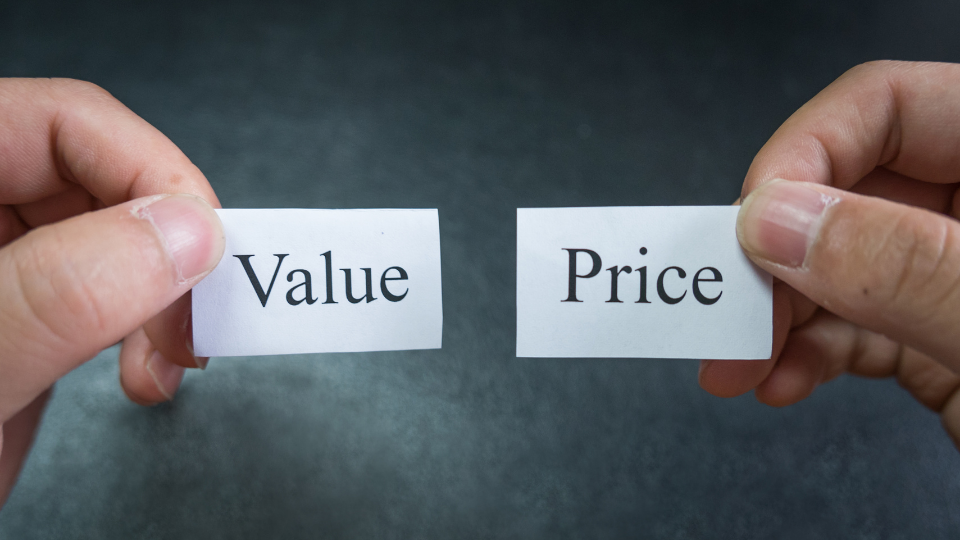Pricing a product or service is rarely as simple as looking at your overhead, adding a markup, and calling it a day. In today’s hyper-competitive market, pricing strategy has become a sophisticated tool that can influence consumer behavior in subtle yet powerful ways. This influence is not merely about numbers on a price tag; rather, it’s about triggering psychological signals that speak directly to how people perceive value, fairness, and desire. Understanding the psychology of pricing can help you fine-tune your offerings so that consumers feel compelled to choose your products over competing options.
While it might be tempting to assume buyers are purely rational beings—carefully evaluating each purchase on the basis of cost, features, and expected utility—research consistently shows that decision-making is more frequently guided by subconscious cues and emotional responses. A well-structured pricing model can nudge consumers toward certain conclusions, making the difference between a lukewarm response and a thriving market share. In this comprehensive post, we’ll explore how price perception is formed, how classic cognitive biases can be leveraged, and which practical techniques you can deploy to optimize your pricing strategy. By the end, you’ll gain a deep understanding of how to tap into buyer perceptions and improve your bottom line.
1. The Importance of Perceived Value
Defining Perceived Value
The concept of perceived value is at the heart of any pricing strategy. In simple terms, perceived value is the worth a customer assigns to a product or service based on their subjective impressions and personal needs. Even if you believe your offering is objectively “worth” a certain price—based on production costs, quality of materials, brand reputation, and more—what truly matters is the customer’s perception. If consumers perceive your price to be too high relative to the benefits, they may abandon the purchase or seek alternatives. On the other hand, if they perceive your price as fair or a bargain, they’re more likely to buy.
Why Perceived Value Matters
When individuals shop, they’re balancing multiple forces: financial constraints, time considerations, emotional reactions, peer influence, and more. Your job as a marketer or business owner is to guide potential buyers toward placing a high value on your product. For example, consider premium coffee brands: the raw materials might be very similar to those found in grocery-store brands, but the perceived value is higher due to factors such as packaging, branding, sourcing ethics, and the overall customer experience. The aim is not to deceive; it’s to showcase value in ways that resonate with your target audience. By focusing on the intangible aspects—storytelling, brand heritage, community impact—you can elevate the perceived value, justify a higher price tag, and cultivate a loyal customer base.
2. Anchoring and the Contrast Effect
What Is Anchoring?
Anchoring is a cognitive bias where people rely heavily on the first piece of information they receive when making decisions. In the context of pricing, the “anchor” is the reference point that customers use to evaluate subsequent price points. For example, if you walk into a luxury boutique and see a coat priced at $1,200, you’ll use that figure as a baseline for judging whether a $900 coat is expensive or affordable. Even if $900 might be high on its own, it appears more attractive when contrasted with $1,200.
Using Anchoring in Pricing
Marketers often strategically present the most expensive option first, setting a high anchor. This makes subsequent, slightly less expensive options feel like bargains. Another common tactic is listing a “regular” price next to a “sale” price—even if the sale price is still relatively high, it appears like a deal because it’s lower than the anchor. Similarly, offering a “premium” version of your product can anchor perceptions, making your standard or mid-tier offerings look more reasonable by comparison. This principle can be used both online and offline: e-commerce sites might show a higher crossed-out price above the actual selling price, while brick-and-mortar retailers place a higher-priced product next to a more modestly priced item to guide consumer choice.
3. The Charm of Left-Digit Pricing
Pricing Just Below a Round Number
A popular tactic is to price something at $19.99 instead of $20.00. While the difference is only a single cent, it can make a tangible impact on how buyers perceive the cost. This is sometimes called “charm pricing” or “psychological pricing,” and it exploits our tendency to read numbers from left to right, focusing disproportionately on the leftmost digit. For instance, $19.99 feels substantially lower than $20, because our brain registers the 19 rather than 20—even though the actual difference is minuscule.
Why It Works
Charm pricing can be especially effective for price-sensitive segments. Every penny matters to certain buyers, and seeing a price that appears to be in a lower bracket (like the “teens” rather than the “twenties”) can create a psychological sense of savings. Additionally, seeing a number like $19.99 signals a deal-oriented mindset. Over time, consumers have been conditioned to respond favorably to these prices because they’re so common in discount stores, supermarkets, and flash sales. Even though many shoppers are aware of the trick, it still works on a subconscious level, playing into deep-rooted associations between specific price points and a sense of getting a good deal.
4. Leveraging Scarcity and Urgency
Scarcity as a Motivator
The fear of missing out (FOMO) is a powerful motivator in consumer psychology. When something is scarce—whether it’s a limited-edition sneaker, a flash sale with limited stock, or a one-time offer—it quickly becomes more desirable. This perceived rarity can justify a higher price and quicker purchasing decisions. Scarcity can manifest in different ways: limited stock, time-limited discounts, or exclusive memberships that cap the number of allowed members. Each of these taps into the natural human inclination to want what others can’t easily have.
Creating Urgency
Urgency is closely related to scarcity, and it can be triggered by time-based constraints. Phrases like “Act now!” or “Offer ends at midnight!” serve to galvanize shoppers into making purchases before they have time to talk themselves out of it. Countdown timers on e-commerce sites make the looming deadline more concrete, amplifying anxiety about missing out. This can be particularly effective for new or undecided customers: if they sense that the opportunity is fleeting, they’re more likely to commit rather than risk missing the deal. However, brands must be cautious not to artificially inflate urgency or scarcity, as consumers can become skeptical if they see the same “limited-time offer” repeated endlessly without any genuine constraint.
5. Bundling and Partitioned Pricing
Why Bundling Works
Bundling is the practice of selling multiple items or services together for a single price. This can be effective in two primary ways. First, it simplifies the purchase decision: rather than agonizing over whether each item is “worth it,” the buyer sees one overall “deal” that looks appealing. Second, it can create a perception of savings. For example, a gym might bundle personal training sessions, diet consultations, and unlimited group classes for a monthly fee that is lower than the sum of the individual components. Consumers often perceive this as getting more bang for their buck.
Partitioned Pricing
Partitioned pricing is when a product’s total cost is broken down into separate components—for instance, a base price plus shipping and handling, or a subscription fee plus an activation charge. While it might seem that adding extra line items would deter buyers, research shows that partitioned pricing can sometimes make the purchase seem cheaper. The key is in how you present the breakdown. If the total appears reasonable and the add-ons are justified or optional, customers might focus on the base rate, perceiving the product to be more affordable than if you presented a lump-sum price. On the other hand, hidden or surprise fees can have the opposite effect, so transparency is crucial for this strategy to work effectively.
6. The Role of Context and Comparative Value
Contextual Pricing
The same price can be perceived differently depending on its context. Consider a $3 cup of coffee at a local diner compared to a $3 cup of coffee at a premium café in a trendy neighborhood. The physical and social context makes a big difference in how buyers perceive the value of that coffee. Likewise, a $50 sweater might seem expensive in a discount department store but entirely reasonable in a high-end boutique. Context can be shaped by branding, store design, packaging, and even the type of customers who frequent the establishment.
Comparative Pricing
Comparative pricing provides options in such a way that one stands out as the best value. You might list three tiers: Basic, Standard, and Premium. The Basic tier exists primarily to make the Standard option appear like a sweet spot in terms of cost and features. The Premium tier, meanwhile, sets an upper anchor that makes the Standard tier feel more affordable. When customers see the stark difference between the bare-bones Basic package and the fully loaded Premium, they often conclude that the Standard is the most logical and balanced choice. This not only increases perceived value but can also guide consumers toward the product you genuinely want to sell most.
7. The Influence of Emotions in Price Evaluation
Emotional Triggers
Human decision-making is not governed by pure logic. Emotions play a considerable role, and they can override our rational assessment of whether a purchase is “worth it.” A luxurious hotel may be able to charge a premium because it evokes feelings of comfort, prestige, and indulgence. Similarly, purchasing organic or fair-trade items can carry the emotional payoff of making an ethical, responsible choice. Consumers justify higher prices by the emotional benefits they receive, whether that’s pride of ownership, excitement, or a sense of belonging to a particular community.
Building Emotional Connections
To capitalize on emotional triggers, your brand message and storytelling should align with positive emotions. Showcasing genuine testimonials, highlighting social good, or offering personalized experiences can help you establish an emotional bond with your audience. For instance, a startup selling handmade, eco-friendly notebooks could emphasize that each purchase helps plant a tree. Customers who value sustainability will feel good about spending a little extra because their emotional need to care for the planet is being met. Over time, these emotional connections can foster brand loyalty, allowing for more flexible pricing without alienating loyal patrons.
8. Price Sensitivity and Customer Segmentation
Understanding Customer Segments
Not all customers are created equal when it comes to price sensitivity. Some segments—like bargain hunters—will respond best to deep discounts and promotions, while others prioritize convenience or brand status over cost. If your primary target is affluent consumers seeking premium experiences, a low price might even hurt your brand image, making you appear less exclusive. On the other hand, if you cater to a cost-conscious demographic, high prices could immediately drive them away.
Tailoring Prices to Segments
Differentiated pricing can be achieved in numerous ways. You might offer different packages aimed at distinct user groups—think student discounts, family bundles, corporate plans, or loyalty programs. Airlines have long used dynamic pricing to match supply and demand, charging higher fares during peak seasons or for last-minute bookings. Similarly, software companies often have tiered subscriptions, each targeted at different use cases. By aligning your pricing structures with the specific needs and pain points of various segments, you can maximize revenue while ensuring that each group feels your offering is worth the price.
9. The Power of “Free” and Freemium Models
Why “Free” Is So Alluring
“Free” is not just a price—it’s a psychological trigger. The zero-price effect describes how people behave irrationally when something is offered at no cost. Even if the free item is of minimal objective value, its zero cost amplifies interest disproportionately. This dynamic is apparent in everything from giveaways at conference booths to free samples at the grocery store.
Freemium Strategies
Freemium models leverage the allure of “free” to attract large user bases. Typically seen in software and online services, the basic features are offered at no cost, while premium features require a subscription or one-time payment. This pricing structure lowers the barrier to entry, encouraging trial and adoption. Once users become accustomed to the product—and perceive genuine value—they’re more willing to pay for enhanced features. The success of the freemium model hinges on offering enough value in the free tier to hook users, but withholding some premium benefits that users will eventually feel are worth purchasing. It’s a delicate balance: give too little away, and people won’t see the point in continuing. Give too much away, and they’ll never feel the need to upgrade.
10. Leveraging Loss Aversion
Understanding Loss Aversion
Loss aversion is a cornerstone of behavioral economics. It suggests people feel the pain of loss more acutely than they feel the pleasure of a gain. As a result, they’re often willing to take risks or pay premiums to avoid losing something they already have, or think they’re about to secure. For instance, if consumers believe they might “lose out” on a bonus feature or a discount by not acting quickly, that sense of impending loss can spur them into action.
Risk-Reversal Tactics
You can harness loss aversion by flipping the script on who bears the risk. Money-back guarantees, free trials, or “try before you buy” offers effectively remove the consumer’s perceived risk. When someone starts using a product or service and invests time or emotion into it, they become more attached. At that point, giving it up feels like a loss. So, if the brand says, “We’ll only charge you if you continue after 30 days,” many customers will pay to avoid losing access to something they’ve grown to appreciate. This approach also builds trust, showing the brand’s confidence in its own offerings.
11. Using Social Proof to Justify Pricing
Social Proof Defined
Social proof is the idea that people look to the behaviors and decisions of others to guide their own actions. When we see a crowded restaurant, we assume the food must be good. When we see glowing testimonials or high review scores, we assume a product is worth its asking price. Social proof can come in the form of testimonials, user reviews, celebrity endorsements, case studies, or even visible cues like a high follower count on social media.
Justifying Higher Prices
Positive social proof can justify a higher price because it signals that others like us have found this product worthwhile. This mitigates perceived risk: if so many others are satisfied, we believe we will be too. Luxury brands often employ celebrity endorsements or feature social influencers using their products to signal exclusivity and desirability. Smaller businesses rely on customer testimonials or success stories. Either way, social proof complements other pricing strategies by providing external validation. The more credible your social proof, the easier it is for consumers to rationalize paying a premium.
12. Pricing Experiments and A/B Testing
Why Experimentation Matters
No matter how much academic research or expert advice you read, you won’t know precisely what works for your business until you experiment. A/B testing your prices, discount structures, or promotional messages can yield real-world data on consumer reactions. You might discover that a slight price hike doesn’t reduce sales volume as much as you fear, thereby increasing overall revenue. Alternatively, you might find that a small discount or bundling strategy significantly boosts unit sales.
Conducting a Proper A/B Test
When running pricing experiments, isolate one variable at a time. If you change both the price and the packaging simultaneously, you won’t know which variable actually moved the needle. Use two distinct groups—a control group and an experimental group—and track key metrics such as conversion rate, average order value, and overall revenue. Make sure your sample size is large enough to draw statistically significant conclusions. Over time, iterative testing allows you to fine-tune your pricing until you hit the sweet spot between perceived value and profitability.
13. Ethics and Transparency in Pricing
Balancing Profit and Ethics
While psychology-based pricing tactics can be enormously effective, they also carry ethical considerations. Misleading price comparisons, hidden fees, and manipulative scarcity tactics can erode trust and harm your brand’s long-term reputation. Ethical pricing, by contrast, aims to deliver genuine value to customers without resorting to trickery. Transparency fosters loyalty and positive word-of-mouth, which can be far more valuable than a short-term boost in sales.
Long-Term Relationship Building
Customers are increasingly savvy, and deceptive pricing tactics might backfire. A business that prioritizes honesty in its pricing—clearly explaining why products cost what they do—often experiences less churn and higher satisfaction rates. This transparency allows consumers to feel good about their decision, reducing buyer’s remorse. Moreover, ethical pricing aligns with the growing consumer emphasis on corporate responsibility. Whether you’re a small business or a global brand, ethical and transparent pricing can be a differentiator that resonates in a crowded marketplace.
14. Case Studies of Successful Pricing Strategies
Apple’s Premium Pricing
Apple has long been a master at using brand, design, and perceived value to justify higher prices. The sleek aesthetics, robust ecosystem, and user-friendly experience command a loyal following willing to pay a premium. This approach relies on strong emotional connections and the consistent delivery of high-quality products. By controlling distribution channels and maintaining tight brand messaging, Apple keeps tight control over its pricing perception.
Costco’s Membership Model
Costco employs a membership model that charges an annual fee for access to its “wholesale” pricing. Customers perceive they’re getting significant savings, even if they end up making more purchases—especially in bulk—than they otherwise would. The membership fee also instills a sense of belonging and exclusivity, tapping into social proof as customers see others in their community also investing in the membership. This synergy of perceived savings, exclusivity, and social reinforcement makes Costco’s business model extremely resilient.
Subscription Services
Companies like Netflix and Spotify have thrived by shifting from ownership (buying CDs or DVDs) to a low monthly subscription cost that grants unlimited access. The monthly fee feels more palatable than purchasing multiple individual pieces of content. This subscription model has redefined entire industries, relying heavily on perceived value, low barriers to entry, and emotional engagement, as users get continuous entertainment at a predictable cost.
15. Practical Steps to Refine Your Pricing
- Identify Your Value Proposition
Determine what unique benefits or experiences your product offers. Craft marketing messages that communicate how these benefits translate into real value for the consumer. - Study Your Competition
Compare your offerings to similar products or services in the market. Look at not just what they charge, but how they position their brand, what promotions they run, and how they structure their pricing tiers. - Segment Your Audience
Not all customers will respond to the same pricing. Use surveys, data analytics, and user feedback to categorize customer segments by willingness to pay, loyalty, and usage patterns. - Choose the Right Pricing Tactics
Based on your value proposition and customer segments, determine which psychological pricing strategies (anchoring, charm pricing, bundling) best fit each segment. - Test and Iterate
Launch A/B tests or pilot programs with small subsets of your customer base. Gather data on conversion rates, average revenue per user, and churn. Refine your approach based on the insights you gain. - Maintain Transparency
Whether you’re using partitioned pricing or offering multiple tiers, be upfront about costs. Clear communication fosters trust, which can have a significant impact on long-term customer retention. - Review Outcomes Regularly
Keep an eye on key metrics like profit margins, customer lifetime value, and customer feedback. Periodically adjust your prices or promotions in response to market trends and business performance.
16. Common Pitfalls to Avoid
- Overusing Discounts: While discounts can spike sales, relying on them too often can train customers to wait for the next sale, eroding brand loyalty and damaging perceived value.
- Confusing Pricing Structures: If buyers have to jump through hoops to understand your pricing, they might give up and look elsewhere. Clarity is key.
- Ignoring Market Shifts: If consumer preferences, competition, or economic conditions change, sticking to an outdated pricing strategy can backfire.
- Failing to Provide Context: A price without context is easily perceived as too high. Always position your price relative to your product’s benefits and competitor benchmarks.
- Ethical Missteps: Using fake scarcity or misleading anchors can lead to customer backlash and hurt your credibility in the long run.
17. The Future of Psychological Pricing
As technology continues to evolve, so too does the potential for more nuanced pricing strategies. Data analytics, machine learning, and artificial intelligence are making it possible to create highly personalized pricing in real time. Imagine an e-commerce platform that tailors each price offer to each individual user’s behavior, purchase history, and even browsing patterns. While this level of personalization can significantly boost profits, it also raises new ethical and regulatory questions around fairness, transparency, and potential discrimination.
Moreover, the lines between online and offline commerce continue to blur. Augmented reality (AR) and virtual reality (VR) shopping experiences might allow for immersive pricing experiments, where real-time sentiment analysis detects emotional responses and adjusts promotions accordingly. As these capabilities advance, brands that harness psychological pricing ethically and innovatively will likely stand out.
18. Conclusion
Pricing is both an art and a science. On one hand, it requires data-driven analysis, competitive intelligence, and profitability calculations. On the other, it demands a deep understanding of how consumers think and feel. Price tags communicate more than just monetary costs; they broadcast signals of quality, desirability, exclusivity, and even social alignment. By leveraging insights from behavioral economics and consumer psychology, you can craft prices that not only reflect your product’s value but also resonate on a more emotional level with your target audience.
Ultimately, the goal is to strike a balance between being profitable and transparent, persuasive without being manipulative. Whether you choose to implement charm pricing, develop a premium tier, bundle offers, or harness the power of social proof, the key lies in genuinely understanding your customers. Test, measure, and iterate. Be prepared to fine-tune your strategies in response to market feedback, and always keep ethics at the forefront of your pricing decisions. In doing so, you’ll create sustainable relationships with your audience, encourage brand loyalty, and, of course, bolster your bottom line.
By appreciating and applying the psychology of pricing, you’ll be well-equipped to tap into buyer perceptions, transform how they value your products, and ultimately craft a pricing strategy that stands the test of time.




